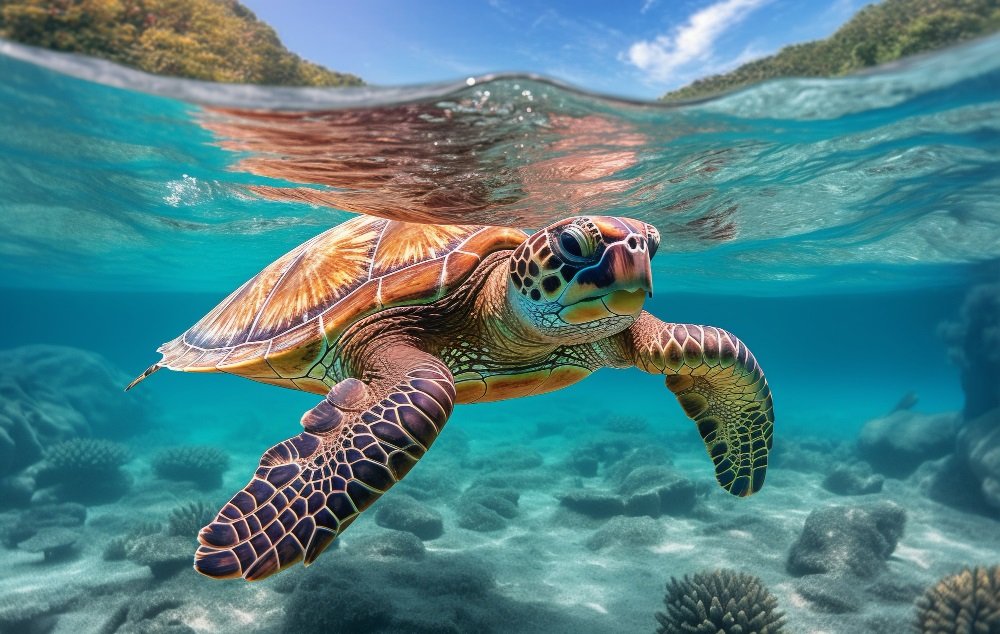Turtles have been roaming the earth for over 220 million years, and yet, they continue to face numerous threats to their survival. One of the most significant and pressing issues affecting turtle populations is the impact of plastic pollution on their habitats and bodies. As we delve into the world of turtles and plastic, it’s essential to understand the scope of the problem and the devastating effects it has on these incredible creatures.
Overview
The issue of plastic pollution and its impact on turtles is a global concern, with millions of turtles affected worldwide. Plastic waste, including bags, bottles, and microbeads, enters the environment through various means, including litter, storm drains, and wastewater treatment plants. Once in the environment, plastic debris can be ingested, entangled, or suffocated, causing harm to turtles and other marine animals.
Why is it a problem?
Plastic pollution affects turtles in several ways:
• Ingestion: Turtles mistake plastic for food, leading to blockages, nutrient deficiencies, and even death.
• Entanglement: Plastic debris, such as six-pack rings and fishing nets, can entangle turtles, causing injury or drowning.
• Suffocation: Plastic bags and other debris can suffocate turtles by blocking their airways.
• Habitat destruction: Plastic pollution can also alter turtle habitats, making it difficult for them to find food, shelter, and mates.
Consequences
The consequences of plastic pollution on turtles are far-reaching and devastating:
• Population decline: The impact of plastic pollution can lead to a decline in turtle populations, threatening their very survival.
• Ecosystem disruption: The loss of turtles can have a ripple effect throughout the ecosystem, disrupting the delicate balance of nature.
• Economic impacts: The loss of turtle populations can also have significant economic impacts, particularly for industries that rely on tourism and fishing.
What can be done?
While the problem of plastic pollution and its impact on turtles is significant, there are steps being taken to address the issue: (See Also: When Did The Ninja Turtles Get Different Colors)
• Recycling: Improving recycling infrastructure and practices can help reduce the amount of plastic waste entering the environment.
• Education: Raising awareness about the issue of plastic pollution and its impact on turtles can inspire individuals to take action.
• Policy changes: Governments and organizations are implementing policies to reduce plastic waste and promote sustainable practices.
By working together to reduce plastic pollution and its impact on turtles, we can help protect these incredible creatures and preserve the delicate balance of our ecosystem.
How Many Turtles Are Affected By Plastic?
Turtles have been on our planet for over 220 million years, and yet, they are still facing numerous threats to their survival. One of the most significant and insidious threats is plastic pollution. Plastic debris has become a ubiquitous feature of our environment, and its impact on turtles is staggering.
The Problem of Plastic Pollution
Plastic pollution is a global issue that affects every corner of the planet. Plastic waste, including bags, bottles, microbeads, and other items, is not biodegradable and can take hundreds of years to decompose. As a result, plastic debris accumulates in our oceans, rivers, and landfills, harming countless species of plants and animals.
Turtles, in particular, are vulnerable to plastic pollution due to their diet and habitat. Many species of turtles feed on jellyfish, squid, and other marine animals that can mistake plastic for food. When turtles ingest plastic, it can cause blockages, nutrient deficiencies, and even death. Additionally, turtles often get entangled in plastic debris, such as six-pack rings and fishing nets, which can lead to injury or drowning.
The Scale of the Problem
The scale of plastic pollution affecting turtles is alarming. According to the World Wildlife Fund (WWF), over 100 million marine animals, including turtles, are killed by plastic pollution every year. This staggering statistic is a testament to the devastating impact of human activities on the environment.
Studies have shown that plastic debris is found in over 90% of sea turtles worldwide. In fact, a study published in the journal Marine Pollution Bulletin found that 72% of sea turtles had ingested plastic debris, with the majority of cases involving microplastics, such as microbeads and plastic fibers.
The Impact on Turtle Populations
The impact of plastic pollution on turtle populations is far-reaching and devastating. Many species of turtles are already endangered or vulnerable due to habitat destruction, climate change, and other human activities. Plastic pollution is exacerbating these threats, leading to population declines and even local extinctions. (See Also: Where To See Sea Turtles In Port Aransas)
In the United States, for example, the National Oceanic and Atmospheric Administration (NOAA) estimates that over 50% of sea turtle nesting sites are affected by plastic pollution. In Australia, the Australian Government Department of the Environment and Energy reports that plastic pollution is a major threat to the country’s sea turtle populations, with over 90% of turtles found with plastic debris in their stomachs.
The Consequences for Human Health
The impact of plastic pollution on turtles also has consequences for human health. Turtles play a crucial role in maintaining the health of our ecosystems, serving as both predators and prey for other species. When turtles are affected by plastic pollution, it can have a ripple effect throughout the entire ecosystem, leading to changes in population dynamics and even extinctions.
Furthermore, the chemicals used to manufacture plastic can leach into the environment, contaminating the food chain and potentially harming human health. In fact, studies have shown that humans who consume seafood contaminated with plastic pollutants may be at risk of developing diseases such as cancer and reproductive problems.
What Can Be Done?
The good news is that there are many ways to reduce the impact of plastic pollution on turtles and the environment as a whole. Here are some steps you can take:
- Reduce your use of single-use plastics, such as bags, bottles, and straws.
- Recycle as much plastic as possible, including plastic bottles, cans, and containers.
- Participate in beach cleanups and other environmental initiatives to help remove plastic debris from the environment.
- Support organizations that work to protect turtles and their habitats, such as the World Wildlife Fund and the Sea Turtle Conservancy.
- Spread awareness about the issue of plastic pollution and its impact on turtles and the environment.
Conclusion
The impact of plastic pollution on turtles is a pressing issue that requires immediate attention and action. By reducing our use of single-use plastics, recycling, and participating in environmental initiatives, we can help protect turtles and the environment. It is essential that we take a proactive approach to addressing this issue, as the consequences of inaction will be devastating for both turtles and humans.
Key Points
• Over 100 million marine animals, including turtles, are killed by plastic pollution every year.
• Plastic debris is found in over 90% of sea turtles worldwide.
• Many species of turtles are already endangered or vulnerable due to habitat destruction, climate change, and other human activities.
• Plastic pollution is exacerbating these threats, leading to population declines and even local extinctions.
• The chemicals used to manufacture plastic can leach into the environment, contaminating the food chain and potentially harming human health.
• Reducing our use of single-use plastics, recycling, and participating in environmental initiatives can help protect turtles and the environment. (See Also: What Is The Sea Turtles Scientific Name)
Recap
In conclusion, the impact of plastic pollution on turtles is a significant and pressing issue that requires immediate attention and action. By understanding the scale and consequences of plastic pollution, we can take steps to reduce our use of single-use plastics, recycle, and participate in environmental initiatives. It is essential that we work together to protect turtles and the environment, as the consequences of inaction will be devastating for both turtles and humans.
Here are five FAQs related to “How Many Turtles Are Affected By Plastic”:
FAQs: How Many Turtles Are Affected By Plastic
Q: How many turtles are affected by plastic pollution in the world’s oceans?
According to the World Wildlife Fund, it’s estimated that over 50% of all sea turtles are affected by plastic pollution, with millions of turtles entangled in or ingesting plastic debris every year. The exact number is difficult to quantify, but it’s clear that plastic pollution is having a devastating impact on turtle populations worldwide.
Q: What types of plastic are most harmful to turtles?
The most harmful types of plastic to turtles are microplastics, which are small plastic particles less than 5 millimeters in size. These particles can be ingested by turtles, causing blockages and nutrient deficiencies. Additionally, plastic bags, six-pack rings, and other types of plastic debris can entangle or suffocate turtles.
Q: How do turtles ingest plastic debris?
Turtles ingest plastic debris for a variety of reasons. They may mistake plastic for food, such as jellyfish or seaweed, or they may become entangled in plastic debris and accidentally ingest it while trying to free themselves. Additionally, turtles may ingest plastic particles that are small enough to be mistaken for food, such as microbeads or plastic fibers.
Q: What are the consequences of plastic pollution for turtles?
The consequences of plastic pollution for turtles can be severe. Ingesting plastic debris can cause blockages, nutrient deficiencies, and even death. Entanglement in plastic debris can cause injury, suffocation, and drowning. Additionally, plastic pollution can also affect turtles’ habitats and food sources, leading to population declines and even extinction.
Q: What can I do to help reduce plastic pollution and protect turtles?
There are many ways to help reduce plastic pollution and protect turtles. One of the simplest steps is to reduce your use of single-use plastics, such as plastic bags, straws, and water bottles. You can also participate in beach cleanups, support organizations that work to reduce plastic pollution, and advocate for policy changes that protect turtles and their habitats. Every small action can make a big difference in the fight against plastic pollution and the protection of turtles.


